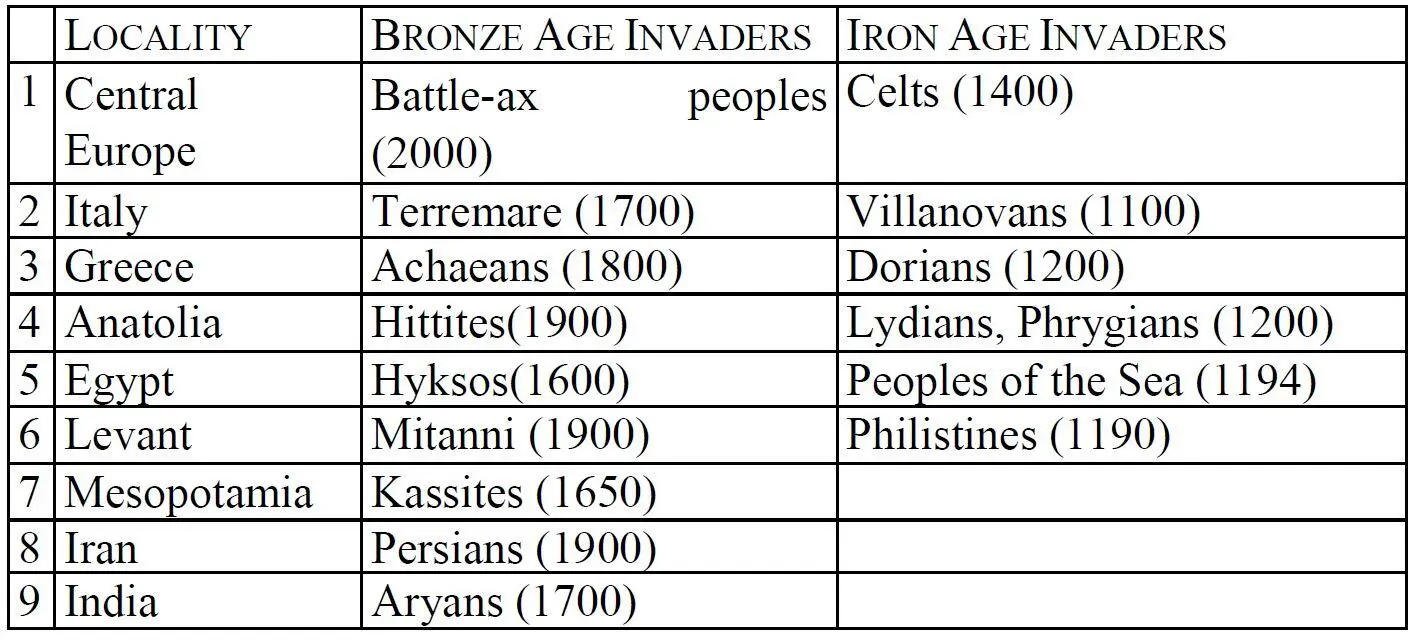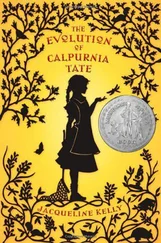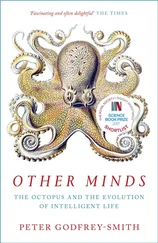From these last remarks it must be clear that climate change continued to determine the chronological pattern of events even in the postglacial period. This is correct. Following the Boreal period (14,000-6000 B.C.) we find great cultural significance in a period of warmer and drier climate from about 2500 to about 1000 B.C. This period, called the Sub-Boreal, was preceded and followed by periods of more adequate rainfall. The earlier of these, known as Atlantic climate, lasted from about 6000 B.C. to 2500 B.C., while the later, known as the Sub-Atlantic, lasted from about 1000 B.C. to about A.D. 200. In these two periods of more plentiful rainfall, the Northern and Southern Flatlands, especially in Arabia and on the Kirghiz Steppes, had a more plentiful supply of grass and thus supported more numerous herds of grazing animals and larger numbers of men. In the intervening Sub-Boreal period, as well as during the drier period after A.D. 200 (for about a thousand years), the increased drought reduced the grass and the grazing herds and forced the tribesmen who lived off these to migrate out of these Flatlands toward the Highland Zone and the Mediterranean. One of the master patterns of the chronology of postglacial human history in the Northwest Quadrant was this four-stage sequence of climate change that saw each of two periods of adequate rainfall and relatively sedentary populations followed by a period of inadequate rainfall and devastating tribal migrations. The explosive qualities of the two drier periods following 2500 B.C. and A.D. 200 were intensified by the fact that the earlier periods of adequate rainfall, following 6000 B.C. and 1000 B.C., had greatly increased the density of population in the Flatlands and thus intensified the movement of peoples when the climate finally became drier.
It should be noted that the dates given for these climate changes are those that apply to the Northern Flatlands (and thus to Eurasia) and that the corresponding changes in the Southern Flatlands of Sahara-Arabia occurred a little earlier.
The most notable consequence of the Sub-Boreal dry period following 2500 B.C. and of the post-Classical dry period following A.D. 200 has been the outpouring of peoples from Arabia and from the areas around and to the east of the Kirghiz Steppes. During both dry periods the peoples who moved out of Arabia are called Semites. In the earlier dry period the peoples who moved out of the Northern Flatlands were Indo-Europeans, while those who moved out of this area during the later dry period were Ural-Altaic speakers.
The Semites who moved out of Arabia because of the Sub-Boreal and post-Classical dry periods did not emerge in any constant or steady stream but rather came in waves. These waves went in three chief directions: (1) south-westward into Africa; (2) westward into the Levant (Palestine and Syria); and (3) eastward into Mesopotamia (Iraq). We shall say nothing more about the ones who went into Africa, but those who went into the Levant and Mesopotamia are too significant to be neglected even in the most cursory examination of Old World history. These two areas together form a semicircle, open to the south, around the Arabian Desert, and called by Breasted "the Fertile Crescent." This crescent, like a great horseshoe curving northward, has its western leg resting on the head of the Red Sea near Aqaba, while its eastern leg rests on the head of the Persian Gulf. Any movement of peoples out of Arabia by land would be into the Fertile Crescent.
There have been four such waves bringing newcomers either into the Levant on the west or into Mesopotamia on the east. Although these emigrants were quite closely related to one another, they are usually known by different names in the two halves of the Fertile Crescent even in the same outward movement.
The first wave of emigrants into the Levant, just before 3000 B.C., are simply called Semites, while their brothers who moved eastward are called Akkadians in the middle valley and Assyrians in the northern valley. The second wave, just before 2000 B.C., are known as Canaanites in the Levant and as Amorites in Mesopotamia. In the course of the second millennium B.C., various branches of these two groups became distinguished in different areas so that some of the Canaanites came to be known as Ugarites, Phoenicians, and Hebrews, while some of the Amorites came to be called Babylonians. The third wave out of Arabia brought people known as Arameans in the Levant and as Chaldeans in Mesopotamia. The fourth wave, which began about A.D. 600, were known as Arabs in both areas.
The chronological relationships among these various groups of Semites can be seen in the following tabulation:

Naturally movements of these Semite peoples outward from Arabia had profound effects upon the history of civilizations. The Canaanites became the chief element in a civilization of their own, known as Canaanite civilization, which lasted for almost 2000 years, ending with the destruction of Punic culture by the Romans about 100 B.C. The Arabs also came to form a distinct civilization, called Islamic, which lasted about 1400 years and ended with the destruction of the Ottoman Empire in the twentieth century. The other peoples named (Akkadians, Amorites, Arameans, Chaldeans, and Assyrians) played varied roles in that most venerable of civilizations, Mesopotamian, which originated in the activities of a non-Semite people, the Sumerians, and ended with the imperial achievements of another non-Semite people, the Persians.
While the Semite peoples were emerging from the Arabian desert to play the roles we have mentioned, even greater activities were being performed by the Indo-European peoples who were emerging from the drying Northern Flatlands. These peoples pushed out from the Flatlands in two waves, of which the earlier are called the Bronze Age invaders, while the others, 800 years or so later, are known as the Iron Age invaders. These two waves, shortly after 2000 B.C. and again shortly before 1000 B.C., were both results of Sub-Boreal climate changes, and consisted of Indo-European-speaking peoples. A third wave, after A.D. 200, contained a considerable number of other Indo-European speakers, notably the Germans, but the original impetus came from the pressure of Ural-Altaic speakers. Of these Ural-Altaic speakers who pushed out of the Asiatic Flat-lands after A.D. 200, the earliest were the Huns. These were followed, during the next thousand years, by other Ural-Altaic-speaking peoples such as the Avars, Bulgars, Magyars (Hungarians), Mongols (or Tartars), and Turks.
A chronological table showing the movements of the Indo-European peoples in the two earlier waves originating from the Sub-Boreal climate is by no means as simple as it might be because these movements sent peoples into many geographic areas, in each of which they are known by a different name. The earlier, or Bronze Age, invaders, about 1800 B.C., originated in the Flatlands north of the Caspian Sea and sent peoples into areas extending from central or western Europe to India. The later, or Iron Age, invaders, about 1100 B.C., originated northwest of the Black Sea and sent peoples into areas from central Europe to Palestine, but not farther east. As a result, we must include in our table nine different regions, as follows:

In Europe itself the third millennium B.C., especially the latter half of it, saw the most important changes in all Europe's history. The preceding period of warm, moist climate had continued for over three thousand years, and led to the growth of thick forests that broke up the human inhabitants into small isolated bands dwelling in the rare open sites on the banks of rivers or on the shores of lakes and seas. The herds of grass-eating animals almost disappeared, and the highly successful paleolithic way of life in which man was a hunter of big game was replaced by a sedentary way of life in which man was a gleaner, a fisherman, or a hunter of small game in wooded terrain. This new way of life, known as the mesolithic, lasted about three thousand years (60003000 B.C.) and was also found on the western fringes of Asia and the northern fringes of Africa where the increase in rainfall was also evident. This mesolithic culture is regarded by most writers as a retrogression from the much more dramatic big-game hunting of an earlier period, but it seems to me that this is a mistaken point of view. It is also generally considered to be a local, European, development, which seems to be equally wrong.
Читать дальше












